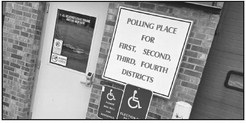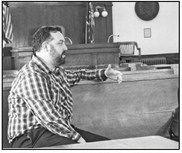From small beginnings RVA has grown to include 40 districts


Starting in 2005, the Medford Area Public School District authorized the opening of the Rural Virtual Academy Charter School (RVA) to begin exploring and serving students in the new world of digital learning. The school was opened in cooperation with five participating districts including Abbotsford, Colby, Medford, Rib Lake, and Prentice. At this time the school served 17 fulltime students and there wasn’t any part-time use of digital learning being utilized in any of our consortium school districts.
Now, 16 years later our consortium has grown to 40 school districts, serving 1,500 full-time students in our virtual school, and an additional 4,000 part-time students through our District Connect program. Ten percent of Wisconsin school districts are now members of the RVA consortium and we have already secured the partnership of 13 additional districts for the 2021-22 school year. By all indications, including fiscal performance, satisfaction ratings, academic outcomes, and flexible learning opportunities combined with collaborative partnership agreements between public school entities, the RVA is proving to be a successful model in the evolving landscape of education.
As we come to the conclusion of this school year, I reflect back on what a year it has been. As financial advisor and author Howard Ruff once stated, “It wasn’t raining when Noah built the ark.” To say that the RVA was built in preparation for a pandemic wouldn’t be the truth, but to say that the school wasn’t well-prepared and designed to handle a pandemic would also be a false claim. To all the founding members of the RVA, we thank you for your wisdom and insight to take a risk, to have the vision to see the evolution of education decades ahead of time, and the conviction to take action on something new and different because it was in all of our best interest to be prepared. Our founders had the foresight to challenge the establishment, push education forward, and prepare for the proverbial flood even when most could not imagine children learning in any other place beside a traditional classroom or private homeschool setting. Because of the foresight of our founders the RVA was left relatively unscathed by the pandemic. Instead, the RVA provided educational stability and normalcy to thousands of children and families through its full-time virtual school and “District Connect” offerings. The full-time virtual school was staffed and equipped to support 1,500 students for the 2020-21 school year. Unfortunately, this capacity was not enough. Nearly 4,000 students who wanted to enter the RVA full-time could not. However, we did not turn our backs on those families. Instead, we turned to support our local consortium of school districts and provided them access to online courses, resources, and training to serve their own local families using their own local teachers and remote learning plans. Our District Connect team rose to this challenge providing over 15,000 courses to 4,000 students under the guidance of over 300 local teachers this past school year. These efforts kept children connected to their local school districts while allowing those same school districts to take full advantage of their RVA partnership. It was one less obstacle for many of our partner districts to have to overcome when trying to reinvent education.
Because of the pandemic, last summer school districts across the country were forced to react quickly and reimagine the traditional school day by building “remote learning plans” for students of families choosing not to attend traditional in-building classes. Now at the close of this school year, none of us should be overly surprised that the news touts negative experiences from the majority of school districts and teachers throughout the nation regarding their hurried lackluster rollouts and the failed educational effectiveness of the vast majority of remote learning plans.
While we should not be surprised, we should also not be overly critical. The strain traditional schools faced by trying to build robust full-time virtual options while at the same time maintaining traditional options was a necessity born out of need, but a nearly impossible mission filled with unrealistic timelines and expectations. This pandemic brought not only a demand for traditional school systems to try to develop new ways to deliver high-quality educational opportunities at a distance, but it also came with fluid populations of teachers and students being placed in quarantine, inadequate technological infrastructures, curriculum vendors unable to support the professional development needs of teachers, three months of planning, an ongoing teacher shortage, and a myriad of other localized obstacles. When combined, all of these challenges largely prevented a first-rate remote learning experience for arguably most children and teachers across the nation this past school year. For those school districts who made the best of these challenges, and especially to the local administration and teachers who bore the brunt of implementing the impossible, they should be graciously recognized and commended.
Annually, the RVA provides a satisfaction survey to all parents in grades PreK-12 and to all students in grades 6-12. Participants are asked to rate the services of the school using an “A-F” rating scale. Because of the added stress of the pandemic, we had expected to receive lower than average results. What impresses me most again this year is the scores people give to our staff. Out of the hundreds of surveys returned, the cumulative grade point average of all individual staff was a 3.74. This is the same as saying that 94% of scores were an “A.” I am so incredibly proud of our staff in annually fulfilling the mission of the school, and especially during this pandemic when our students, families, and communities needed us the most. What I think is also important to note is that a 3.74 is the average score of our staff over all of our years.
This means that as our school continues to grow and in the face of a pandemic, the quality of our services as measured by students and parents has not declined. As a matter of fact, scores over the past four years have increased. We are committed to maintaining this excellence. Our families who support us directly through their hard earned tax dollars deserve to have only the highest quality of educational opportunities afforded to their children. We know that these opportunities are only possible when the teachers and support staff of any school are of only the highest caliber.
While much of this past year’s remote learning began as an emergency response to school building closures at the onset of the coronavirus pandemic, signs across the nation now indicate it may become a permanent fixture on the educational landscape. For example, in Nevada, a bill inspired by the “Blue Ribbon Commission for a Globally Prepared Nevada” would compel all districts to make a plan for virtual education and ensure students have access to suitable technology. Nevada Senate Bill 215, is now being considered in the state Assembly, and would also do away with the traditional number of days that distance learning students must spend in a grade, allowing them instead to move through school as they master skills.
In the April 11, 2021 New York Times article, “Online Schools Are Here to Stay, Even After the Pandemic,” it stated that some families have come to prefer standalone virtual schools and do not intend to send their children back into traditional classrooms. Even here in Wisconsin, our legislature recently passed and the governor signed into law Act 18 lifting previous restrictions on districts to provide virtual learning programs and for families to enroll into those programs regardless of where children reside. The aim of it all seems to be that legislatures and educational leaders largely want to make virtual learning a permanent and lasting viable option, rather than a last resort. As we have attested for many years, we believe now more than ever online learning is here to stay.
As districts begin to grapple with the future in how to satisfy the subset of their families who are choosing not to return to the building come next fall and instead are choosing to remain virtual, the RVA stands ready to support these districts. Districts who do not find a local solution of the highest quality stand to lose local per pupil funding as well as disenfranchise their own constituents by not accommodating their needs. We predict that not only will districts need to develop a perpetual local virtual learning program, but that programs must provide more than just access to curriculum and asynchronous support of a teacher. Like in most other areas of the service industry, we predict that quality will eventually become the determining factor as to which districts will be able to sustain keeping virtual families local. We know that in operating a virtual school for 16 years that options like a robust special education department, a high quality and quantity of clubs and social activities, and a wide array of curricular options, combined with the flexibility to choose both live and asynchronous instruction are just a few of foundational options toprated virtual schools offer and provide to children and families. Those options are not perceived to be value-added here in the RVA, but they are simply part of who we are. We recognize that our school is to help support and educate the whole child and as a public school choice, should be a school for all children.
In closing, I would first like to thank the Medford Area Public School District’s Board of Education for their continued support and authorization of the RVA. Without their support and fiscal agency we would not have been able to start, much less thrive, in this learning space.
Second, I would like to thank the RVA Governance Board. Our board guides the mission of the school providing direction as we continue to navigate along uncharted pathways. I appreciate the calculated risks our Board allows us to take, and the high standards they hold, by which we are expected to perform. Third, thank you to the administrators and staff from within our consortium school districts. Our partnerships have been forged in a mutually beneficial trust and belief that the success of one is the success of all. We know that by working collaboratively instead of competitively in education we are stronger, our communities are better connected, and our tax dollars are best utilized. Last, none of this would even be possible without students and families. It is because of their choice to enroll in the RVA and remain that we have this school and the opportunity to serve. I thank our students and families for the trust they place in our staff to take academic risks and to challenge the norm. Thank you all for your feedback and guidance. It is our parents who are the true innovators. Their extraordinary patience and refusal to accept nothing but the best in either their children or our school are the reasons public education will continue to positively evolve.
— Charlie Heckel, RVA Administrator
School corner
Charlie Heckel




